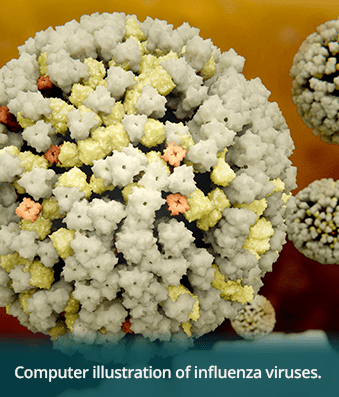Every year in the United States, we can expect flu season to kick off in the fall. And yet despite its start each fall, the flu season that arrives isn’t quite the same as the year before. There are new influenza strains that have appeared, requiring new flu vaccines to be developed. Why is that?
Part of the answer lies in the concept of antigenic drift.
What is antigenic drift?
Antigenic drift describes the way flu viruses change over time. It’s a structural change that begins in the genetic makeup of the virus. This genetic change causes mutations to occur in the two kinds of proteins that lie on the surface of the virus, which are called antigens. Antigens cause your body to create an immune response, producing antibodies to fight an infection.
Antigens may change a little between flu viruses over time. If your immune system has already fought off one influenza virus, it may still "recognize" and fight another flu virus with slightly different antigens.
But as time goes on and antigenic drift continues to alter influenza viruses, those similarities may fade. As a result, a person’s immune system may not recognize a new flu virus due to its antigen mutations—so the antibodies produced by the immune system may not work against the virus.
Why antigenic drift creates a need for updated flu vaccines
Flu vaccines usually target one particular antigen on a flu virus called hemagglutinin, or HA. Usually, the protection a flu vaccine gives against one influenza virus will also work with other flu viruses that have similar antigens. The effects of antigenic drift explains why there’s a need for new vaccines each year. They need to be adjusted to the new viruses that are anticipated to circulate in the coming flu season.
Antigenic drift vs. antigenic shift
Antigenic drift is common, but flu viruses can also change through a process that happens less often called antigenic shift.
There are four types of flu viruses, labeled A, B, C and D. Influenza A and Influenza B circulate in humans during flu season each year.
Antigenic drift is a gradual change that can affect Influenza A and Influenza B viruses. In contrast, antigenic shift describes when an Influenza A virus undergoes a more dramatic change, resulting in the development of new antigens on the surface of the Flu A virus. This may result in the creation of a new Influenza A virus.
Antigenic shift may occur if a Flu A virus in animals spreads to humans. Most humans will have limited immunity to the new Flu A virus—or no immunity at all.
Learn about the different types of influenza




